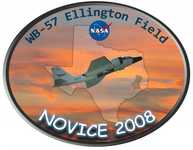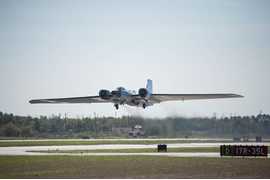
Newly-Operating and Validated Instruments Comparison Experiment
Atmospheric Composition
- 1
- view all deployment datesDeployment
2008-09-01 2008-09-15 - 1
- Platforms
- 0
- Data Products
The Campaign
The Newly-Operating and Validated Instruments Comparison Experiment (NOVICE) was a series of flights designed to test airborne instruments. These instruments either needed initial flight performance assessments after construction or modification, or they could provide validation measurements of chemical species for comparison. NOVICE was based at Ellington Field in Houston, Texas, and took place in September 2008. The WB-57 aircraft carried several instruments, including the Airborne Compact Atmospheric Mapper (ACAM), Uncrewed Aerial System Laser Hygrometer (ULH), and Diode Laser Hygrometer (DLH). NOVICE was funded by the NASA Airborne Science Program.
N: 33°N
S: 27°N
W: 96°W
E: 90°W
no campaign DOI available
Additional Notes
Repositories
Unpublished

NASA WB-57
Events
